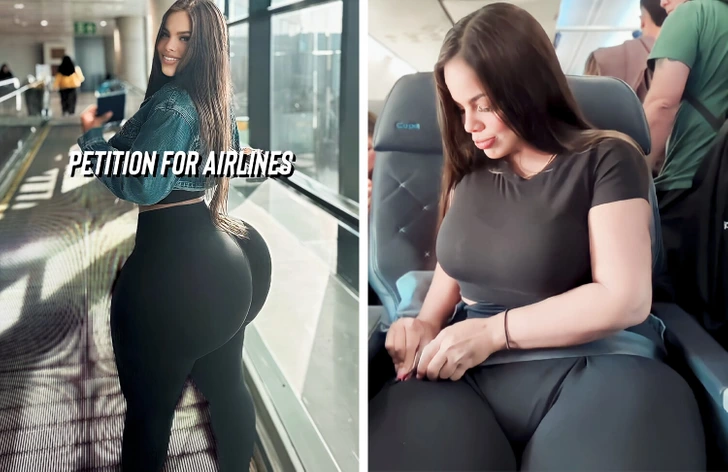A recent social media post by a woman who found her “curvier figure” uncomfortable in a standard airplane seat has reignited a conversation about airplane design and its limitations in accommodating the diverse body types of modern air travelers. This isn’t just about one passenger’s experience; it’s a call for a broader discussion about inclusivity in air travel, the changing demographics of passengers, and the need for innovative solutions to ensure a comfortable and dignified travel experience for all.

Shrinking Space, Expanding Waistlines: The Discomfort Equation
Airline seats have been steadily shrinking over the past few decades, driven by a desire to maximize passenger capacity and increase profits. However, this trend has collided head-on with the reality of a growing population with a wider range of body sizes. The current design fails to accommodate this diversity, leading to discomfort, frustration, and a sense of exclusion for many travelers.
Beyond the “One-Size-Fits-All” Approach: Embracing Body Positivity and Inclusivity
The airline industry needs to move beyond the outdated “one-size-fits-all” mentality. A growing body of research emphasizes the importance of body positivity and inclusivity in all aspects of life, including air travel. Airlines have a responsibility to ensure that their seating designs reflect this shift and cater to the needs of a diverse passenger base.

Beyond the Economy Class Squeeze: Rethinking Comfort Across All Classes
This conversation isn’t limited to economy class. Passengers in premium cabins also deserve ample legroom and seat width to ensure a comfortable journey. Airlines can explore innovative seating arrangements, adjustable features, and ergonomic designs to create a more universally comfortable flying experience.
Innovation Takes Flight: Exploring Solutions for a More Inclusive Future
The good news is that solutions exist. Airlines can explore wider seat options, adjustable armrests, and the potential for reclining mechanisms that don’t encroach on the legroom of the passenger behind. Investing in new seat designs might seem costly initially, but the potential benefits in terms of passenger satisfaction and brand loyalty are significant.

Beyond the Physical: The Psychological Impact of Discomfort
The physical discomfort of a cramped airplane seat can have a significant psychological impact on passengers. Feeling squeezed in, unable to comfortably adjust your position, can lead to anxiety, frustration, and a sense of being unwelcome. Airlines need to consider the holistic travel experience and prioritize passenger well-being.

A Global Conversation: The Need for Industry-Wide Standards
This issue transcends individual airlines. The conversation about inclusive airplane design needs to be addressed on a global scale. Industry-wide standards could be established, ensuring that all airlines prioritize passenger comfort and cater to a broader range of body types.

The Future of Flight: A More Comfortable and Inclusive Journey
The airplane cabin of the future should be a space that welcomes all travelers with comfort and dignity. By embracing innovative design solutions and prioritizing inclusivity, airlines can create a more positive and enjoyable flying experience for everyone. This shift is not just about convenience; it’s about recognizing the diverse needs of passengers and ensuring that the skies are truly open to all.
The Takeaway: A Call for Change
The story of the woman who couldn’t fit comfortably in her airplane seat is a wake-up call for the airline industry. It’s time to move beyond the status quo and embrace innovative solutions that prioritize passenger comfort and inclusivity. By designing airplanes for the realities of the modern world, airlines can ensure a more enjoyable and dignified travel experience for all.
